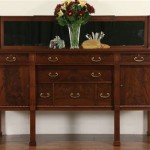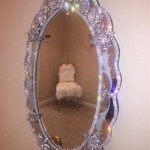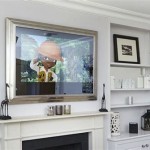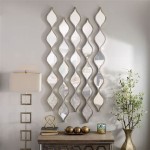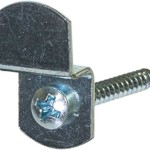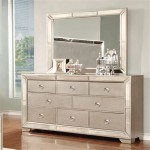How High Should The Bathroom Mirror Be?
Choosing the right height for a bathroom mirror is a crucial element in creating a functional and aesthetically pleasing space. A properly hung mirror caters to everyone using the bathroom, regardless of height, ensuring comfortable use for daily routines like shaving, applying makeup, or simply checking one's appearance. Incorrect placement can lead to frustration and inconvenience, highlighting the importance of understanding the factors influencing ideal mirror height.
Consider the Average Height of Users
The primary factor determining the ideal mirror height is the average height of the individuals who will be using the bathroom. In a family bathroom, this involves considering the heights of all family members, from the tallest adult to the shortest child. Taking these varying heights into account ensures that the mirror accommodates everyone's needs. For a guest bathroom, a more general average height can be used, typically catering to a broader range of potential users.
Calculating the average height of the household members provides a good starting point. Once calculated, the center of the mirror should ideally be positioned at or slightly above the average eye level of the household. This allows most individuals to comfortably see their reflection without excessive bending or stretching.
Factor in the Distance from the Mirror
The distance between the mirror and the user also plays a significant role in determining the appropriate hanging height. In smaller bathrooms, individuals typically stand closer to the mirror. This closer proximity allows for a slightly lower mirror placement without compromising visibility. Conversely, in larger bathrooms where individuals might stand farther away, the mirror might need to be hung slightly higher to ensure a full reflection can be seen comfortably.
The size of the mirror itself is also a relevant factor. Larger mirrors offer more flexibility in terms of placement, as they provide a wider field of view even at a greater distance. Smaller mirrors may require more precise placement to ensure adequate visibility, particularly in smaller bathrooms.
Account for Vanity Height and Backsplash
If the mirror is being hung above a bathroom vanity, the height of the vanity countertop significantly influences the optimal mirror placement. The mirror should be positioned with enough clearance above the backsplash and countertop to prevent splashing and to maintain a cohesive aesthetic. A standard practice is to leave a space of a few inches between the top of the backsplash and the bottom edge of the mirror.
The style and size of the vanity also contribute to the overall bathroom design and can influence mirror placement. A larger, more ornate vanity might require a larger mirror hung slightly higher to balance the visual proportions of the space. Conversely, a smaller, minimalist vanity might pair well with a smaller mirror hung slightly lower.
Think About the Overall Bathroom Design
Beyond the practical considerations, the overall design and aesthetic of the bathroom should also be considered when determining mirror height. The mirror should complement the existing design elements, including the lighting fixtures, wall color, and other decorative elements. For example, a large, statement mirror might serve as a focal point in a minimalist bathroom, while a smaller, more understated mirror might be more appropriate in a more traditional setting.
The shape and style of the mirror can also contribute to the overall design. A round or oval mirror might soften the lines of a modern bathroom, while a rectangular or square mirror can create a more classic and timeless look. Considering these design elements ensures that the mirror enhances the overall aesthetic of the bathroom rather than detracting from it.
Consider Special Circumstances
Certain circumstances may require adjustments to the standard guidelines for mirror height. For instance, if a household member uses a wheelchair, the mirror should be positioned lower to allow for comfortable use. Similarly, in a children's bathroom, placing the mirror at a lower height is essential to accommodate their smaller stature. These adjustments ensure accessibility and usability for everyone.
Addressing these special circumstances demonstrates consideration for all users and contributes to a more inclusive and functional bathroom design. Adapting the mirror height to individual needs enhances the usability and comfort of the bathroom space for everyone.
Illuminate the Space Effectively
Proper lighting is crucial for maximizing the functionality of the bathroom mirror. Well-placed lighting fixtures, such as sconces or overhead lighting, can eliminate shadows and provide even illumination across the face. The placement of the mirror should be coordinated with the lighting design to ensure optimal visibility and create a flattering and functional lighting scheme.
Consider the type and intensity of lighting when determining mirror placement. Brighter lighting might be necessary for tasks such as applying makeup, while softer lighting might be preferred for creating a relaxing atmosphere. Careful consideration of lighting ensures the mirror serves its purpose effectively and enhances the overall ambiance of the bathroom.

Bathroom Mirror Size Calculator

How High Should You Hang The Mirror In A Bathroom With Photos Design Morsels

Bathroom Mirror Size Calculator

How To Pick And Hang The Perfect Bathroom Mirror Roomhints

How To Pick And Hang The Perfect Bathroom Mirror Roomhints

Guide To Hanging Bathroom Vanity Lighting And Mirrors Liven Design

How High To Hang A Vanity Mirror Sparrow Stoll

How High To Place Your Bathroom Fixtures Inspired Style

How High To Hang A Bathroom Mirror Homemate Mirrors

How High To Place Your Bathroom Fixtures Inspired Style

